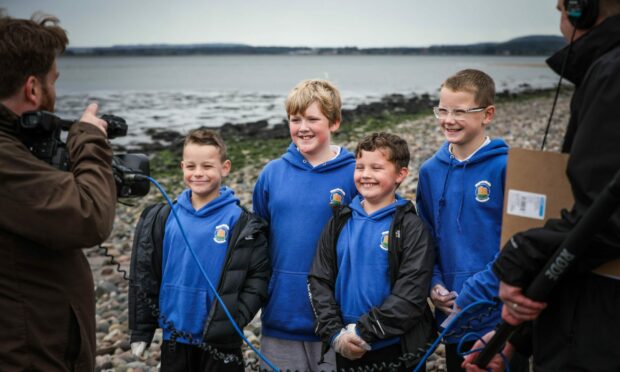Plastic: Remaking Our World is the latest exhibition to come to Dundee’s V&A.
The interactive exhibition looks at the “promise and problem” of plastic, from its conception to mass-production today.
As an environment reporter on The Courier, I wanted to learn more about what the exhibition had to say about the substance, and the huge problems it creates.
But something bothered me, right from the start.
I felt the exhibition fell into the trap of passing the buck to children and young people for reducing the plastic waste in the world.
Why does the responsibility for reducing plastic use lie with the young?
This isn’t a new concept.
At sixteen, Greta Thunberg called out governments worldwide for not being “mature enough to tell it like it is”.
Greta criticised the hand-me-down responsibility back then.
But that hasn’t stopped the Dundee exhibition using a similar technique.
The Plastic Lab is a free entry interactive area just before the V&A exhibition itself.
Within it, you can find a wall covered with personal pledges concerning plastic.
The pledge wall also demonstrates the frustration felt by some of the youngest in our community.
Children are the least at fault for the mass production of plastic.
Of course, it’s important to educate younger generations how to combat plastic waste.
But they should not be held accountable for the mistakes (or inaction) of their parent’s, or grandparent’s generation.
So are we helpless in the face of plastic domination?
At the beginning of the exhibition, it certainly feels like it.
Kalpa is the immersive film installation that starts off your journey with plastic.
During this film, you are surrounded by plastic.
It seems as though it could suffocate you in moments where chunks are spread through the air onscreen.
Images of different foods wrapped in plastic glisten from either side of the room, a reminder of visitors’ own involvement with the material – mine included.
I too felt that helplessness and frustration that the child who wrote the earlier message felt.
The film ends, rather hopelessly, with the image on the screen getting smaller and smaller.
The excess of plastic waste we’re shown seems inescapable in that moment, with no way out.
Plastic paradox
But while plastic pollution endangers life – both sea life and us humans – it is often used for saving lives in the medical field.
Plastic is used for the likes of prosthetics, syringes, IV, disposable gloves and protective clothing.
A display of plastics strewn along a beach suggests why this dependency is damaging.
For this part of the exhibition, children from Claypotts Castle primary school in Broughty Ferry helped make a short documentary about reducing plastic waste.
For me, there was arguably more attention on what children are doing to reduce their plastic waste than on what corporations, councils and the government should be doing to tackle the problem.
How can plastic be used in the future?
The exhibition also provides some tangible ways forward.
Barłomiej (or Bart) Urbański is a part of Doba Studio. He was recycling plastic in the Plastic Lab at the V&A.
The group showcase an alternative way to recycle plastic – that can be done on a much smaller scale than what we are all used to.
Bart showed me how a personal plastic recycling machine in the V&A’s Plastic Lab works.
And in less than two minutes, this nifty machine allowed me to turn molten plastic into a comb, coaster or even jewellery.
It’s a reminder there are real ways that people can make a difference and put their plastic waste to use.
So let’s not rely on the young when we can all play a part in fighting plastic waste.
Make your own plastic pledge here.












Conversation